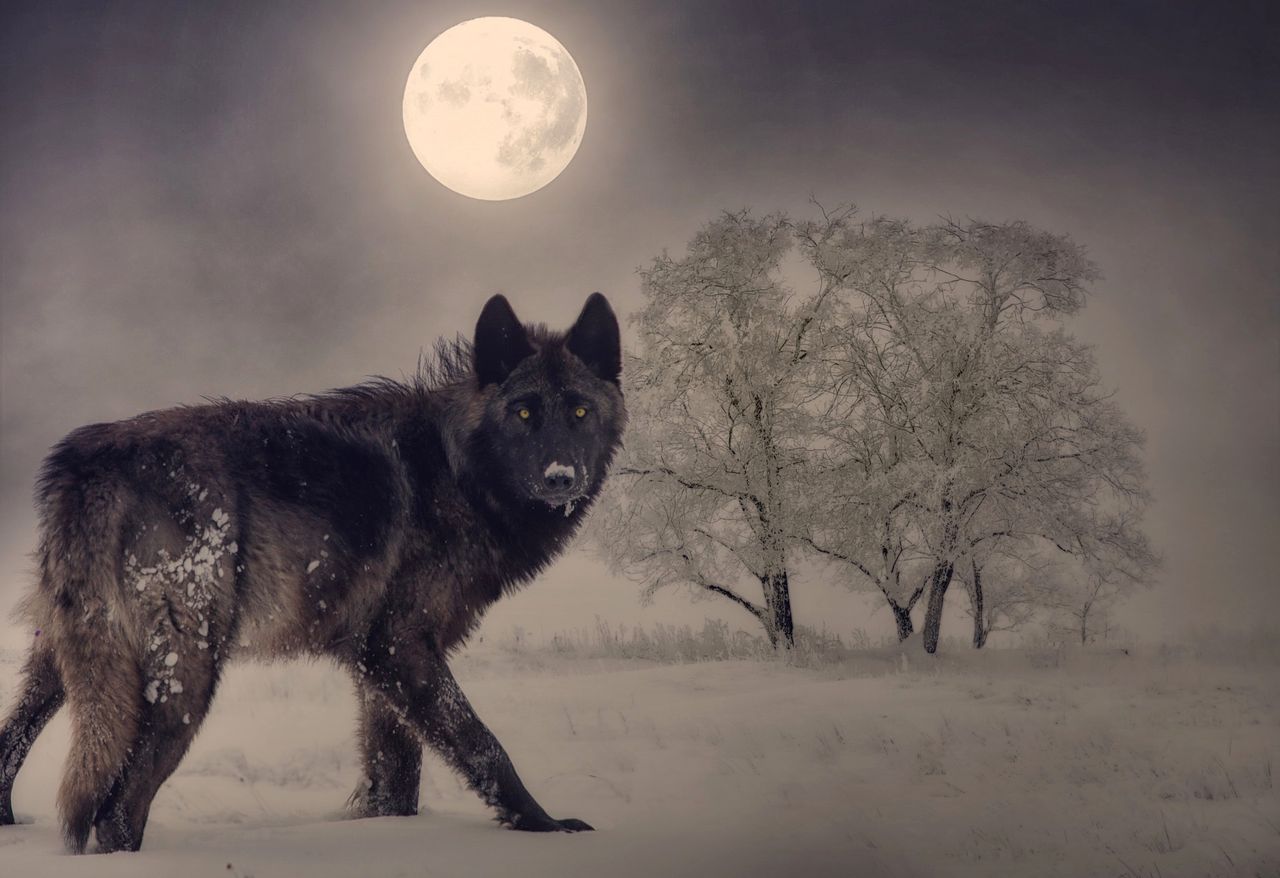Get ready for the wolves to start howling. The first full moon of 2020 will shine brightly in the night sky on Thursday, Jan. 9, and Friday, Jan. 10 — the day it officially becomes full.
The full January moon carries a cool but scary-sounding nickname, the “wolf moon” — a monicker that was coined by Native American tribes that would often hear packs of hungry wolves howling on cold and snowy nights in the middle of winter.
That’s what many people believe. However, the Old Farmer’s Almanac has a different opinion on the nickname’s origin.
“It was traditionally thought that they howled due to hunger, but there is no evidence for this,” the publication says. “However, wolves do tend to howl more often during winter months, and generally howl to define territory, locate pack members, and gather for hunting.”
By the way, the January full moon will be one of 13 full moons appearing in 2020, because the month of October will have two full moons. And some sky watchers are calling this month’s full moon the “wolf moon eclipse,” because people in some parts of the world — not here in North America — will see a partial lunar eclipse as the moon turns full.
Best time to see the full January moon
Stargazers will have a few good viewing opportunities, as long as the clouds don’t interfere. The wolf moon will reach its fullest phase at 2:21 p.m. Eastern time on Friday, Jan. 10, which means it will appear nearly full Thursday night, completely full Friday night and very close to full Saturday night.
In the New York City region, the moon will rise in the east-northeast sky at 3:45 p.m. Thursday, at 4:45 p.m. Friday and 5:53 p.m. Saturday, according to TimeAndDate.com.
If you are an early riser, check out the big moon as it sets in the west-northwestern sky at 7:12 a.m. Friday, 8:07 a.m. Saturday or 8:54 a.m. Sunday.
Other nicknames for the full January moon
All full moons have generated a variety of nicknames dating back to the days when Native American tribes and Colonial Americans would name each moon based on weather conditions, farming routines and hunting trends during that time of year.
Although the “wolf moon” is the most common nickname for the full January moon, it also has been known as the “cold moon,” the “old moon,” the “great spirit moon,” or the “moon after Yule,” according to the Farmers’ Almanac and the Old Farmer’s Almanac.
Some tribes referred to the full January moon as the “snow moon,” but that nickname is more common for the February full moon.
Flashback to January 2019: Very few people in the astronomy world referred to last year’s January full moon as the wolf moon because it coincided with a total lunar eclipse and also happened to be one of the year’s “supermoons.” As a result, the January 2019 moon had a few popular nicknames — “supermoon,” “blood moon” and “super blood moon.”
The blood nickname refers to the reddish tint given off by the moon as it is goes through an eclipse.
Next full moon of 2020
If you don’t get a chance to see the January full moon, you can look for next month’s full “snow moon” during the early-morning hours on Feb. 9.
In 2020, sky watchers will get a chance to see at least two “supermoons” — the exact number is under debate in the astronomy community — moons that appear slightly bigger and brighter than an ordinary full moon.
Most experts agree one supermoon will appear March 9, and another will follow April 7. Some say the February and May full moons will also be supermoons, based on the distance of their orbit around the Earth when they reach their fullest phase.
This year will also feature a “blue moon” on Halloween, because it will be the second of two full moons in October. The first will appear Oct. 1.
Source: Full January wolf moon will be shining in the sky this week – nj.com
